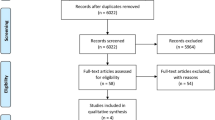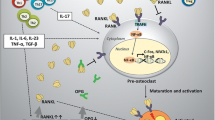Abstract
The aim of this study was to confirm the effect of the systemic administration of melatonin on hydroxyapatite-coated titanium (HA-Ti) implants in senile osteopenic rats. For this study 24-month-old female Sprague-Dawley rats were used. The animals were randomly divided into two groups: a control group and a melatonin group and the bilateral femurs of all the rats received HA-Ti implants. Animals in the melatonin group received treatment with melatonin (30 mg/kg day). After a 12-week healing period, rats in the melatonin group revealed improved osseointegration compared to the control group, with the bone area ratio (BAR) and bone to implant contact (BIC) increased by 1.87-fold and 1.65-fold in histomorphometry, the quantitative results of implant osseointegration and peri-implant trabeculae, such as a higher bone volume per total volume (BV/TV), trabecular number (Tb.N), the mean connective density (Conn.D), trabecular thickness (Tb.Th), and a lower trabecular spacing (Tb.Sp) in micro-computed tomography (CT) evaluation and the maximum push-out force by 1.75-fold in push out tests. Additionally, compared with the control group, melatonin could significantly up-regulate the expression of the runt-related transcription factor 2 (Runx2), osteocalcin (OC) and osteoprotegerin (OPG) genes and down-regulate the expression of the RANKL gene. These findings suggest that systemic administration with melatonin is useful to improve the fixation of HA-coated implants even in osteopenic rats through promoting Runx2, OC and OPG gene expression and inhibiting RANKL gene expression.
Zusammenfassung
Ziel der vorliegenden Studie war es, die Wirkung der systemischen Applikation von Melatonin auf hydroxylapatitbeschichtete Titanimplantate (HA-Ti-Implantate) bei weiblichen Ratten hohen Alters zu bestätigen. Dafür wurden 24 Monate alte weibliche Sprague-Dawley-Ratten verwendet, die in zwei Gruppen randomisiert wurden: eine Kontroll- und eine Melatoningruppe. Alle Ratten erhielten bilateral HA-Ti-Implantate am Femur. Die Tiere der Melatoningruppe erhielten eine Behandlung mit Melatonin (30 mg/kg pro Tag). Nach 12-wöchiger Heilungsphase zeigten die Ratten in der Melatoningruppe eine verbesserte Osseointegration im Vergleich zur Kontrollgruppe, wobei das Knochenflächenverhältnis („bone area ratio“ [BAR]) und der Knochen-Implantat-Kontakt („bone-to-implant contact“ [BIC]) in der Histomorphometrie 1,87-fach bzw. 1,65-fach zunahmen. Quantitative Ergebnisse der Implantatosseointegration und der Periimplantattrabekel in der Mikrocomputertomographie zeigten unter anderem eine Erhöhung von Knochenvolumen pro Gesamtvolumen (BV/TV), Trabekelzahl (Tb.N), Verbindungsdichte (Conn.D) und Trabekeldicke (Tb.Th) sowie eine Verringerung des Trabekelabstands (Tb.Sp). Zudem fand sich eine 1,75-fach erhöhte maximale Push-out-Kraft in entsprechenden Push-out-Tests. Weiterhin konnte Melatonin im Vergleich zur Kontrollgruppe signifikant die Expression der Gene Runx2, OC und OPG hochregulieren und die Expression von RANKL herunterregulieren. Diese Ergebnisse weisen darauf hin, dass die systemische Melatoninapplikation dadurch von Nutzen ist, dass sie die Fixierung von HA-beschichteten Implantaten sogar bei Ratten mit Osteopenie verbessert, indem sie die Genexpression von Runx2, OC und OPG verstärkt und die Expression von RANKL hemmt.







Similar content being viewed by others
References
Tao ZS, Bai BL, He XW, Liu W, Li H, Zhou Q et al (2016) A comparative study of strontium-substituted hydroxyapatite coating on implant’s osseointegration for osteopenic rats. Med Biol Eng Comput 54(12):1959–1968. https://doi.org/10.1007/s11517-016-1494-9
Bhering CL, Marques IS, Takahashi JM, Barão VA, Consani RL, Mesquita MF (2016) The effect of casting and masticatory simulation on strain and misfit of implant-supported metal frameworks. Mater Sci Eng C Mater Biol Appl 62:746–751
Tao ZS, Zhou WS, Qiang Z, Tu KK, Huang ZL, Xu HM et al (2016) Intermittent administration of human parathyroid hormone (1-34) increases fixation of strontium-doped hydroxyapatite coating titanium implants via electrochemical deposition in ovariectomized rat femur. J Biomater Appl 30(7):952–960. https://doi.org/10.1177/0885328215610898
Tao ZS, Zhou WS, He XW, Liu W, Bai BL, Zhou Q et al (2016) A comparative study of zinc, magnesium, strontium-incorporated hydroxyapatite-coated titanium implants for osseointegration of osteopenic rats. Mater Sci Eng C Mater Biol Appl 62:226–232. https://doi.org/10.1016/j.msec.2016.01.034
Selma Y, Ugur K, Melih E, Nurdan K, Ali EB, Aytekin A et al (2011) The effect of breast-feeding duration on bone mineral density in postmenopausal Turkish women: a population-based study. Arch Med Sci Ams 7(3):486–492
Gabet Y, Müller R, Levy J, Dimarchi R, Chorev M, Bab I et al (2006) Parathyroid hormone 1‑34 enhances titanium implant anchorage in low-density trabecular bone: a correlative micro-computed tomographic and biomechanical analysis. Bone 39(2):276–282
Hara T, Hayashi K, Nakashima Y, Kanemaru T, Iwamoto Y (1999) The effect of hydroxyapatite coating on the bonding of bone to titanium implants in the femora of ovariectomised rats. The Journal of Bone and Joint Surgery British volume 81(4):705–709
Tao ZS, Zhou WS, Tu KK, Huang ZL, Zhou Q, Sun T et al (2015) The effects of combined human parathyroid hormone (1-34) and simvastatin treatment on osseous integration of hydroxyapatite-coated titanium implants in the femur of ovariectomized rats. Injury 46(11):2164–2169. https://doi.org/10.1016/j.injury.2015.08.034
Liu J, Zhong R, Wei X, Liu H, Eisenegger C, Zhou X (2017) Melatonin increases reactive aggression in humans. Psychopharmacology 234(19):2971–2978
Hardeland R, Madrid JA, Tan DX, Reiter RJ (2012) Melatonin, the circadian multioscillator system and health: the need for detailed analyses of peripheral melatonin signaling. J Pineal Res 52(2):139–166
Salido EM, Melina B, Andrea DL, Mónica C, María Inés KS, Damián D et al (2013) Therapeutic efficacy of melatonin in reducing retinal damage in an experimental model of early type 2 diabetes in rats. J Pineal Res 54(2):179–189
María Piedad RF, Luis JCG, Arcesio RDR, Bruno N, Guillermo PZ, David PA et al (2013) Melatonin promotes angiogenesis during repair of bone defects: a radiological and histomorphometric study in rabbit tibiae. Clin Oral Invest 17(1):147–158
Oktem G, Uslu S, Vatansever SH, Aktug H, Yurtseven ME, Uysal A (2006) Evaluation of the relationship between inducible Nitric Oxide Synthase (iNOS) activity and effects of melatonin in experimental osteoporosis in the rat. Surg Radiol Anat 28(2):157–162
Muñoz F, López-Peña M, Miño N, Gómez-Moreno G, Guardia J, Cutando A (2012) Topical application of melatonin and growth hormone accelerates bone healing around dental implants in dogs. Clin Implant Dent Relat Res 14(2):226–235
Tao ZS, Zhou WS, Bai BL, Cui W, Lv YX, Yu XB et al (2016) The effects of combined human parathyroid hormone (1-34) and simvastatin treatment on the interface of hydroxyapatite-coated titanium rods implanted into osteopenic rats femurs. J Mater Sci Mater Med 27(3):43. https://doi.org/10.1007/s10856-015-5650-9
Mehmet HC, Mithat N, Ahmet G, Özlem CZ, Figen N, Canan HC (2010) Melatonin promotes fracture healing in the rat model. Eklem hastalıkları ve cerrahisi. Joint Dis Relat Surg 21(3):172
Li YF, Li XD, Bao CY, Chen QM, Zhang H, Hu J (2013) Promotion of peri-implant bone healing by systemically administered parathyroid hormone (1-34) and zoledronic acid adsorbed onto the implant surface. Osteoporos Int 24(3):1063–1071. https://doi.org/10.1007/s00198-012-2258-5
Gabet Y, Kohavi D, Kohler T, Baras M, Müller R, Bab I (2008) Trabecular bone gradient in rat long bone metaphyses: mathematical modeling and application to morphometric measurements and correction of implant positioning. J Bone Miner Res 23(1):48–57
Li Y, Li Q, Zhu S, Luo E, Li J, Feng G et al (2010) The effect of strontium-substituted hydroxyapatite coating on implant fixation in ovariectomized rats. Biomaterials 31(34):9006–9014
Wauquier F, Philippe F, Léotoing Ll, Mercier S, Davicco M-J, Lebecque P et al (2013) The free fatty acid receptor G protein-coupled receptor 40 (GPR40) protects from bone loss through inhibition of osteoclast differentiation. J Biol Chem 288(9):6542–6551
Tao ZS, Wu XJ, Zhou WS, Wu XJ, Liao W, Yang M et al (2019) Local administration of aspirin with β‑tricalcium phosphate/poly-lactic-co-glycolic acid (β-TCP/PLGA) could enhance osteoporotic bone regeneration. J Bone Miner Metab. https://doi.org/10.1007/s00774-019-01008-w
Zakharov I, Kolpinskiy G, Shkaraburov A, Popova O (2015) Regional features of bone mineral density in women of different age groups. European Congress of Radiology
Luo D, Ren H, Li T, Lian K, Lin D (2015) Rapamycin reduces severity of senile osteoporosis by activating osteocyte autophagy. Osteoporos Int 27(3):1–9
Sirin HT, Vargel I, Kutsal T, Korkusuz P, Piskin E (2015) Ti implants with nanostructured and HA-coated surfaces for improved osseointegration. Artif Cells 44(3):1–8
Koyama H, Nakade O, Takada Y, Kaku T, W Lau (2010) Melatonin at pharmacologic doses increases bone mass by suppressing resorption through down‐regulation of the RANKL‐mediated osteoclast formation and activation. J Bone Miner Res 17(7):1219–1229
Shalini S, Radio NM, Kotlarczyk MP, Chien-Tsun C, Yau-Huei W, Ralf J et al (2011) Determination of the minimal melatonin exposure required to induce osteoblast differentiation from human mesenchymal stem cells and these effects on downstream signaling pathways. J Pineal Res 50(3):222–238
Nakade O, Koyama H, Ariji H, Yajima A, Kaku T (2010) Melatonin stimulates proliferation and type I collagen synthesis in human bone cells in vitro. J Pineal Res 27(2):106–110
Palin LP, Polo TOB, Batista FRDS, Garcia IR, Rossi AC, Freire A et al (2018) Daily melatonin administration improves osseointegration in pinealectomized rats. J Appl Oral Sci. https://doi.org/10.1590/1678-7757-2017-0470
Guardia J, Gómez‐Moreno G, Ferrera MJ, Cutando A (2011) Evaluation of effects of topic melatonin on implant surface at 5 and 8 weeks in beagle dogs. Clin Implant Dent Relat Res 13(4):262–268
Tresguerres IF, Clemente C, Blanco L, Khraisat A, Tamimi F, Tresguerres JA (2012) Effects of local melatonin application on implant osseointegration. Clin Implant Dent Relat Res 14(3):395–399
Calvo‐Guirado JL, Gómez‐Moreno G, López‐Marí L, Guardia J, Marínez‐González JM, Barone A et al (2010) Actions of melatonin mixed with collagenized porcine bone versus porcine bone only on osteointegration of dental implants. J Pineal Res 48(3):194–203
Lim SS, Kook SH, Bhattarai G, Cho ES, Seo YK, Lee JC (2015) Local delivery of COMP‐angiopoietin 1 accelerates new bone formation in rat calvarial defects. J Biomed Mater Res 103(9):2942–2951
Yu-Sik K, Il-Young P, Young-Jun R, Sang-Hoon S (2010) Integrative physiology: defined novel metabolic roles of osteocalcin. J Korean Med Sci 25(7):985–991
Wang J, He M, Wang G et al (2017) Organic gallium treatment improves osteoporotic fracture healing through affecting the OPG/RANKL ratio and expression of serum inflammatory cytokines in ovariectomized rats. Biol Trace Elem Res. https://doi.org/10.1007/s12011-017-1123-y
Li T, Jiang S, Lu C, Yang W, Yang Z, Hu W et al (2019) Melatonin: another avenue for treating osteoporosis? J Pineal Res 66(2):e12548
Kotlarczyk MP, Lassila HC, O’Neil CK, D’Amico F, Enderby LT, Witt-Enderby PA et al (2012) Melatonin Osteoporosis Prevention Study (MOPS): a randomized, double-blind, placebo-controlled study examining the effects of melatonin on bone health and quality of life in perimenopausal women. J Pineal Res 52(4):414–426
Amstrup AK, Sikjaer T, Heickendorff L, Mosekilde L, Rejnmark L (2015) Melatonin improves bone mineral density at the femoral neck in postmenopausal women with osteopenia: a randomized controlled trial. J Pineal Res 59(2):221–229
Sailaja Devi MM, Suresh Y (2010) Preservation of the antioxidant status in chemically-induced diabetes mellitus by melatonin. J Pineal Res 29(2):108–115
Acknowledgements
This study was supported by a grant from the University Natural Science Research Project of Anhui Province (CN) (Grant No. KJ2017A266), and funding of “Peak” Training Program and “Panfeng” Innovation Team Project for Scientific Research of Yijishan Hospital, Wannan Medical College (Grant No. GF2019G04, PF2019005, GF2019T02 and PF2019007).
Author information
Authors and Affiliations
Corresponding author
Ethics declarations
Conflict of interest
T. Sun, J. Li, H.-L. Xing, Z.-S. Tao and M. Yang declare that they have no competing interests.
All studies performed on animals were carried out in accordance with the ethical standards of the institutional and/or national research committee and with the 1975 Helsinki declaration and its later amendments or comparable ethical standards.
Rights and permissions
About this article
Cite this article
Sun, T., Li, J., Xing, HL. et al. Melatonin improves the osseointegration of hydroxyapatite-coated titanium implants in senile female rats. Z Gerontol Geriat 53, 770–777 (2020). https://doi.org/10.1007/s00391-019-01640-1
Received:
Accepted:
Published:
Issue Date:
DOI: https://doi.org/10.1007/s00391-019-01640-1




